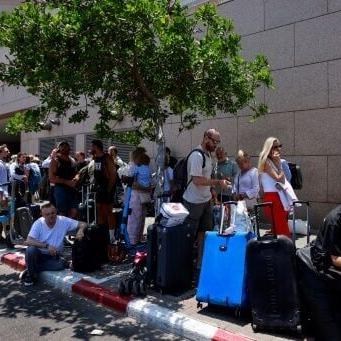Countries Boost Evacuations Amid Ceasefire Doubts
June 24, 2025 – As the tentative ceasefire between Israel and Iran takes hold, nations across the globe have mobilized rapid evacuation operations to safeguard their citizens caught in the conflict zone. Governments from Asia, Europe, and North America are executing complex airlift and ground transit missions, with experts warning the fragile calm could collapse at any moment.
The ceasefire, brokered earlier this week by U.S. President Donald Trump, has offered a brief window for governments to extract thousands of civilians, tourists, students, and expatriate workers from high-risk areas across Israel, Lebanon, and southern Iran. Yet, military alerts remain active, and regional instability continues to test international evacuation logistics.
India Launches Operation Suraksha
India spearheaded one of the most extensive evacuation campaigns, activating “Operation Suraksha” in the early hours of June 23. Within 48 hours, India successfully repatriated over 4,500 nationals, deploying three military transport aircraft and coordinating secure bus convoys from northern Israeli cities into Amman, Jordan, and Baghdad, Iraq.
The Indian Ministry of External Affairs confirmed round-the-clock coordination with Middle Eastern governments and international humanitarian agencies to ensure safe passage. Mobile command centers have been set up near evacuation points, offering basic medical care, food, and immigration support.
China and Australia Respond with Swift Airlifts
China also intensified its evacuation efforts, successfully repatriating 2,000 citizens, according to state media. Operations were routed through third-party countries, including Turkey and the UAE, under protection from temporary humanitarian corridors. China’s Ministry of Foreign Affairs emphasized the “non-political” nature of the effort, underlining the priority placed on citizen safety.
Australia, meanwhile, launched emergency charter flights departing from Cyprus and Amman, transporting evacuees from conflict-adjacent regions in Israel and Lebanon. The Australian government has worked in tandem with Qantas and regional allies to provide free passage for citizens and dual nationals.
U.S. Implements Evacuation and Embassy Closures
In a coordinated response, the United States evacuated American citizens from Israel, southern Lebanon, and parts of Jordan via military and chartered civilian aircraft. The U.S. Embassy in Tel Aviv suspended non-essential services and issued updated Level 4 travel advisories, warning citizens against all travel to the region.
State Department officials confirmed the relocation of key embassy staff and noted that U.S. citizens are being guided to safe zones for extraction, primarily through Jordan and Turkey.
Expanding Beyond Israel: Lebanon and Iran Under Watch
As regional tensions seep beyond Israeli borders, evacuation operations have expanded into southern Iran and border regions of Lebanon. Countries including Germany, the U.K., and France have positioned naval vessels in the Eastern Mediterranean to support potential sea evacuations. Naval units stand ready for large-scale extraction, should ceasefire violations resume.
These governments are also working closely with UNHCR (United Nations High Commissioner for Refugees) and IOM (International Organization for Migration) to assist refugees, dual nationals, and at-risk civilians. Land convoys coordinated with Jordanian military escorts are ferrying individuals to secure checkpoints for airlift operations.
Humanitarian and Psychological Support Ramps Up
Local and international NGOs have mobilized to provide emergency shelters, communications access, and psychological counseling. Populations being evacuated include foreign workers, elderly residents, children, and individuals with medical conditions.
In major cities such as Tel Aviv, Haifa, and Beersheba, emergency shelters have been activated, offering refuge for those still awaiting transport. Embassies worldwide remain on high alert, with mobile consular teams deployed to evacuation hubs to manage visa, documentation, and family reunification services.
Markets Remain Calm, but Contingency Planning Continues
Despite the humanitarian gravity of these evacuation missions, global markets reacted with relative composure. Oil prices, often sensitive to Middle Eastern volatility, held steady, signaling that traders view the coordinated evacuations as prudent crisis containment rather than signs of imminent escalation.
Nonetheless, financial analysts caution that any breach of the ceasefire—such as the June 24 Iranian missile test—could trigger a panic-driven exodus and further disrupt logistics. Increased demand for charter aircraft, strained port access, and visa backlogs pose serious risks to ongoing operations.
Diplomatic Coordination Reaches Rare High
Surprisingly, the evacuations have ushered in rare multilateral cooperation. Nations with limited prior collaboration—including India and China, France and Russia, and the U.S. and Gulf states—are now sharing intelligence, transit access, and border security protocols.
Temporary humanitarian corridors, granted under the ceasefire terms, have emerged as critical arteries for movement. However, observers warn that further missile activity, proxy clashes, or cyberattacks could disrupt these fragile corridors.
News Source: https://www.reuters.com/world/middle-east/countries-ramp-up-evacuations-amid-mideast-ceasefire-2025-06-24/








